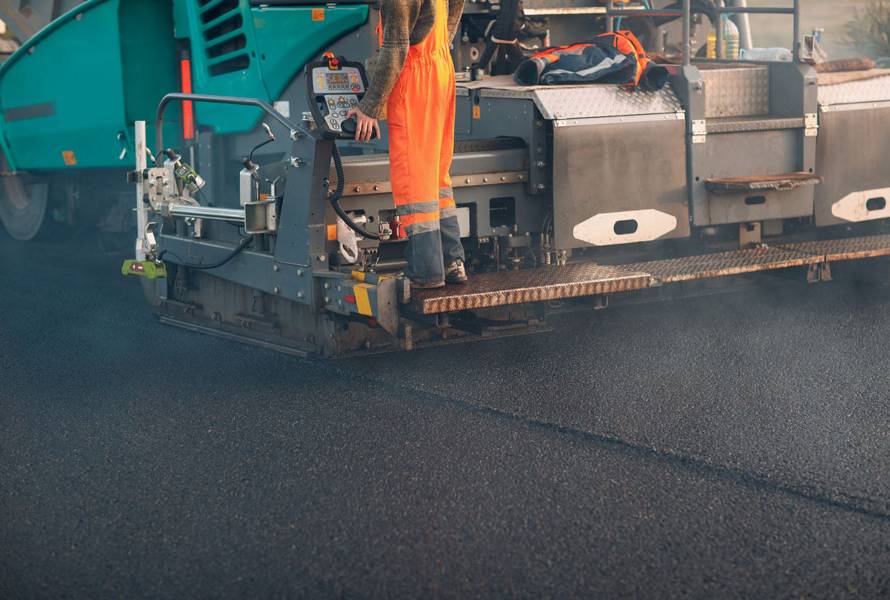In busy urban regions, where traffic hums 24 hours a day and local residents value tranquillity just as much as mobility, the choice of road surfacing has evolved beyond simply durability and cost. Modern road surfaces are now designed with acoustic comfort and environmental impact in mind — and among the most innovative solutions is the adoption of “quiet” or noise-reducing asphalt. This material isn’t just about reducing the decibels; it’s about improving quality of life, enhancing property value, and demonstrating forward-thinking infrastructure planning.
What Is Noise-Reducing Asphalt?
Noise-reducing asphalt refers to specialised road surfaces engineered to absorb or deflect tyre-road noise rather than amplify it. For example, one UK case study on the A14 improvement scheme used a “SuperThin” HAPAS-approved ultra-low-noise asphalt mix, achieving sound reductions of around 7.8 dB(A) compared with traditional hot-rolled asphalt.
The science behind the material involves designing the surface texture, aggregate size and binder type in such a way that sound waves generated by tyre contact are disrupted, absorbed, or prevented from bouncing back into the environment.
Put simply, the road isn’t just built for vehicles — it’s built for the people around it.
Why Does It Matter for Commercial and Residential Projects?
When a road or driveway is located close to homes, offices, schools or hospitals, the sound of traffic becomes a quality-of-life issue. Lower noise levels mean fewer complaints, better occupant comfort, and often higher property values. Beyond residential areas, large commercial sites such as retail parks, logistics hubs or mixed-use developments are increasingly expected to show environmental and community sensitivity.
Using noise-reducing asphalt offers a clear differentiator for project owners: it signals “we’ve thought about local amenity, environment and long-term value”.
How Does It Compare to Conventional Surfaces?
Traditional asphalt surfaces are durable and cost-effective, but they tend to reflect more tyre-road noise because of their smoother, dense textures and the way sound waves escape. By contrast, noise-reducing surfaces use finer aggregate, higher porosity or special binders to trap or diffuse sound energy. According to UK government research, thin-layer porous asphalt can reduce tyre-road noise by roughly 3–4 dB compared with non-porous surfaces.
In practical terms, a reduction of even 3 dB is perceptible to the human ear and can make a noticeable difference in a residential environment.
Plus, quieter surfaces can mean fewer noise-mitigation measures elsewhere (for example barriers, landscaping or operational curfews), which may reduce overall project cost or complexity.
Key Benefits
Choosing a noise-reducing surface delivers multiple benefits. First, the acoustic benefit: less disturbance, better ambient sound levels and therefore improved satisfaction for nearby occupants. Second, the community-relations benefit: for councils or developers, lower noise levels often mean fewer complaints, less risk of objections and smoother planning approval. Third, the asset-value benefit: quieter roads make surrounding real estate more attractive, which can improve resale value or rental yields. Finally, the sustainability benefit: many noise-reducing mixes also incorporate recycled materials, and less frequent maintenance means lower lifecycle carbon and lesser disruption.
For commercial applications, such as large sites or access roads, the long-term reduced maintenance, fewer repairs and better public perception help justify the initial investment.
Selecting the Right Contractor and Specification
To realise the full benefits of noise-reducing asphalt, it’s not enough to buy a “quiet” mix and lay it without precision. Professional specification and installation matter greatly. A competent surfacing contractor will assess traffic types and volumes, site geometry, ground conditions, drainage, and neighbouring receptors (homes, schools etc). They will select an appropriate surface course height, void content, aggregate grading and binder specification. They will also ensure correct compaction and finishing so the acoustic benefits are realised in practice.
For example, if the sub-base is weak or drainage poor, the surface may deteriorate sooner — and acoustic performance could degrade. Surface texture must be consistent; installation must be hands-on rather than “value ad-on”.
Linking to Creative Applications: Resin Driveways & Quiet Surfaces
While the focus here has been on asphalt, it’s worth noting that specialist surfacing options such as resin-bound or resin-bonded systems (for driveways and commercial forecourts) can also contribute indirectly to better acoustic comfort. A quieter driveway surface with better micro-texture can reduce tyre-noise during turning or manoeuvring, which matters for residential developments, schools or high-end commercial sites.
For those exploring both aesthetic and functional surfacing upgrades, you may wish to examine what a trusted specialist delivers when blending functionality, visual appeal and durability. For inspiration and reference, see the work by Total Surfacing Solutions on resin-driveway systems: https://totalsurfacing.co.uk/resin-driveways/ (link to their project-page).
Even if your immediate scope is road or access surfacing, this helps frame how surfacing materials can deliver value beyond simply ‘just the pavement’.
Conclusion
The era of surfacing as “just asphalt on the ground” is over. With smarter materials, better specification and greater attention to community impact, roads and driveways can now perform quietly, sustainably and congenially within their surroundings. Noise-reducing asphalt is not an optional luxury — in many contexts it is an intelligent investment in long-term performance, occupant comfort and community relations.
From a developer’s perspective, choosing surfaces that align with wider quality-of-life goals sets your project apart. From a local authority’s view, quieter roads mean happier residents and fewer complaints. And from a management perspective, quieter assets help preserve value.
In short: when you build roads for the future, silence can be just as important as strength.


